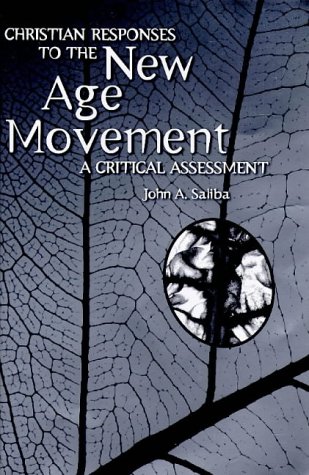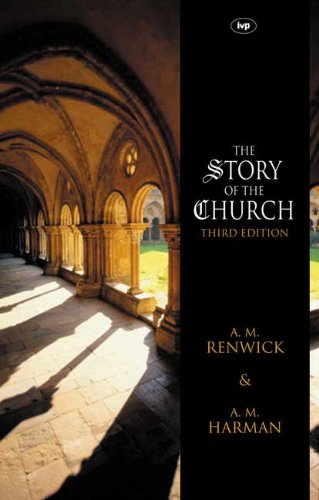Christian Responses to the New Age Movement: A Critical Assessment
Written by John A. Saliba Reviewed By Chris PartridgeJohn Saliba, a Jesuit priest and Professor of Religious Studies at the University of Detroit Mercy, has devoted much of his academic career to the study of new religious movements. He has produced two major bibliographies in the area as well as several studies, perhaps the most well-known being his 1995 work Perspectives on New Religious Movements. As with many of his previous studies, this book is a well-researched and carefully documented piece of work which is as valuable for its bibliographic references as it is for the discussion it provides. The endnotes to each chapter include details of obscure articles, books and websites which many readers with a research interest in the area will find useful.
The book begins with a concise, but worthwhile overview both of New Age beliefs and practices and of scholarly assessments of the New Age which helpfully introduces readers to the various problems involved in studying it and the different definitions scholars have produced. Although the book is principally about Christian responses to the New Age, this chapter is a necessary starting point, helping, as it does, to provide an informed assessment of the various responses.
The following three chapters deal in turn with the responses of, firstly, evangelicals and fundamentalists, secondly, ‘mainline Protestants’ and Eastern Orthodox theologians, and finally, Roman Catholics. Although this division seemed fair enough at first glance, as I read through the book I did wonder whether the subject could have been more efficiently and clearly tackled under broader headings, such as: (a) confrontational approaches; (b) mediating or moderate approaches and (c) syncretistic approaches. This, it seems to me, would have enabled Saliba to present the fruits of his research with more conciseness, cogency and clarity. Certainly the book would have been shorter, less repetitious, and, perhaps, less inclined to confuse and caricature fundamentalist and evangelical responses to the New Age.
The general impression conveyed by this book is that, for the most part, Christians have responded to the New Age with an offensive and ill-informed condemnation. The reason for this is that far too much of the discussion is devoted to what I would term ‘confrontational’ responses. Much of the first chapter describes the erroneous, unscholarly theories of fundamentalists such as Texe Marrs and Constance Cumbey who believe the New Age to be a conspiratorial network controlled by Satan, attended to by devil worshippers, linked with Nazi Germany, central to the advent of the Antichrist and dedicated to the destruction of Christianity. Not only that, but Saliba’s discussions of ‘mainline Protestantism’, Eastern Orthodoxy and Catholicism also make too much of the fundamentalist approaches within these traditions and indeed seek to demonstrate the influence upon them of writers such as Cumbey. Not only does this unhelpful emphasis lead to much needless repetition which might have been avoided had the ‘confrontational’ response been dealt with in a single chapter, but it also leads to (or is perhaps the result of) a confusion between evangelicalism and fundamentalism. Many evangelicals with a good knowledge of the area would not adopt the extreme and often paranoid positions discussed by Saliba in the second chapter (‘Evangelical and Fundamentalist Responses to the New Age Movement’). Indeed, rather unhelpfully, in the third chapter (‘Mainline Protestant and Eastern Orthodox Responses to the New Age Movement’) he not only includes the work of some fundamentalists, but also looks at the more moderate and informed approaches taken by evangelicals. Unfortunately, this failure to distinguish between evangelicalism and fundamentalism in the second chapter, and his discussion of scholarly evangelical work under the heading ‘mainline Protestantism’ in the third chapter leads both to misunderstanding and to an obscuring of the evangelical contribution to the area. In fact, many of the good and moderate critical studies on the New Age by Christians, have been carried out by evangelicals. Not only is this not drawn out in Saliba’s study, but some of the most helpful and reflective studies done by evangelicals are simply not discussed and in some cases not even mentioned: e.g. John Drane’s What is the New Age Saying to the Church?, Lawrence Osborn’s Angels of Light?, Ernest Lucas’s Science and the New Age Challenge, and particularly John Newport’s The New Age Movement and the Biblical Worldview. Rather, instead of discussing these well-researched and considered evangelical responses, Saliba seems determined to focus on either ill-informed fundamentalist books or the work of those who have produced one or two short articles. Again, the above evangelical works, along with other moderate responses such as. for example, Ted Peters’ The Cosmic Self (which is briefly discussed) and Wesley Carr’s Manifold Wisdom (which is not mentioned) could have been helpfully unpacked under a heading such as ‘moderate approaches’.
Not only is the discussion of scholarly evangelical work weak, but even weaker, is his discussion of what I have called, the ‘syncretistic’ response. Although there is some discussion of, for example. Matthew Fox and Donald Reeves, there is by no means enough. Far more attention should have been paid to the thought of these and other Christian thinkers who are not only critically appreciative of New Age thought but seek to incorporate aspects of it into their own theology. Hence, whereas texts such as Martin Palmer’s Coming of Age and Rosemary Radford Reuther’s Gaia and God might have been usefully explored, they are not even mentioned. A separate chapter devoted to New Age-Christian syncretism would have remedied this unfortunate flaw.
The final chapter, ‘Towards a Christian evaluation of the New Age movement’, explores areas of similarity and difference between the New Age and Christianity, presents a more positive (although not uncritical) assessment of it, and encourages Christians to engage in dialogue with New Agers. Although, again, I was a little disappointed that this chapter did not provide a more helpful discussion of the issues involved in Christian-New Age dialogue, overall, the main thrust of the chapter, and indeed the book, is positive and worthwhile.
Finally, something should be said about the index which is very poor. Many of the authors and subjects discussed are not listed, and those that are lack a full list of page numbers.
Having said all that, this is a book which I thoroughly enjoyed. It is accessible, interesting, challenging and, as mentioned above, full of obscure bibliographic information. Hence, in the Final analysis, although I was a little disappointed with it, Saliba does provide a useful contribution to New Age studies and will, hopefully, encourage Christians toward a more careful and informed assessment of the New Age. As he quite rightly comments. ‘The presence and influence of the New Age Movement in the latter part of the twentieth century calls for a Christian response that is clear, reflective, and critical. But for any response to be effective it must avoid emotional outbursts, inaccurate representations and wild accusations. What Christians who come in touch with the New Age Movement need is accurate information about its beliefs and practices and a solid background in Christian theology’ (191).
Chris Partridge
Department of Theology and Religious Studies Chester College






